June 11, 2020
Shannon Mustipher Carries a Tiki Torch for Cocktail Storytelling
Cocktail consultant and author Shannon Mustipher brings a philosophy of education and enlightenment to spirits culture.
By Stef Ferrari
Photography by Noah Fecks
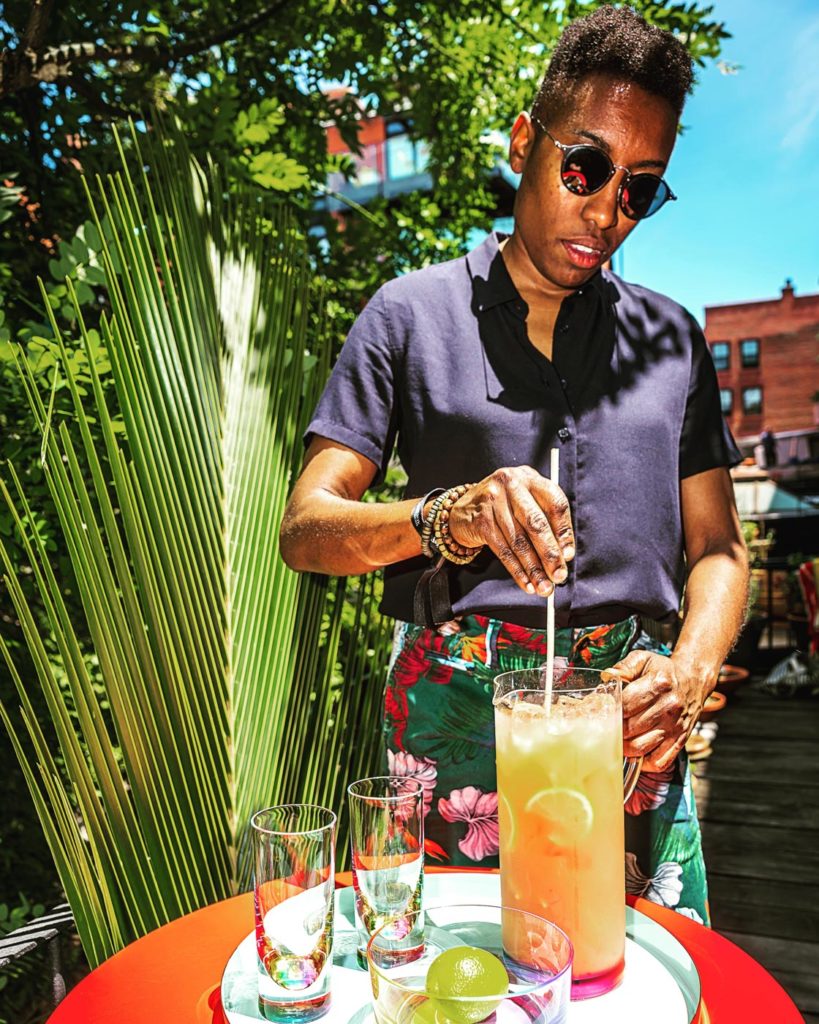
It’s a long time coming when I finally “meet” Shannon Mustipher. Our friend and contributing photo correspondent, Noah Fecks, who also shot Mustipher’s book Tiki: Modern Tropical Cocktails, has been raving for years. “You really need to meet Shannon,” he’d say to me, shoot after shoot.
By the time we finally make it happen, our interview can’t take place over cocktails the way I’d hoped; thanks to Covid-19, Mustipher is calling from Upstate New York and I’m in Connecticut. But the travel limitations don’t stop our discussion from taking a dynamic journey through the time and space significant to Mustipher’s life—from Rhode Island to Brooklyn, Brazil to the Pacific Coast, from antebellum days to mid-century America, from the modern day and—because Mustipher is nothing if not a forward-thinking overachiever—to the future.
Mustipher came to hospitality in a circuitous way, like so many who are artfully inclined. She grew up in Atlanta and Charleston, attended Rhode Island School of Design where she studied painting, and then eventually moved to New York City. There, she tells me, work was unreliable in the creative fields she studied, so after a period working as a wardrobe styling assistant, she turned to food and beverage.
It was during her foray into coffee that a throughline began to emerge for Mustipher—one now evident in her current work. She tells me she was “getting really obsessed with coffee as a category.” Mustipher was attending cupping sessions and collecting beans. “I had ten or twelve different types of equipment to make coffee at home,” she laughs, and tells me she even began baking her own biscotti. Mustipher considered not just what was in the cup, but the environment, how it was served, and what could accompany it to create a holistic story. Her philosophy was developing—founded in understanding the history and context of a product not only for her own enrichment, but to enhance the experience of those she served and the products with which she worked.
When she later moved into the wine world, this ideology continued to guide her path when she began to study wine more deeply. “I really loved walking people through picking something out that they’d enjoy,” she tells me. “That education element was really fun for me.”
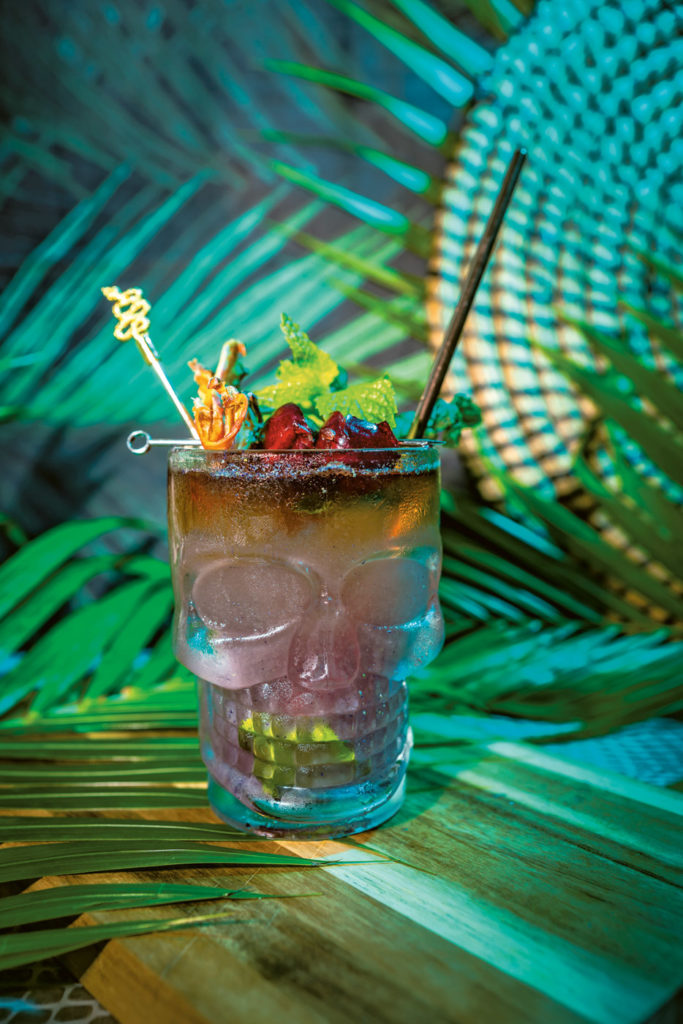
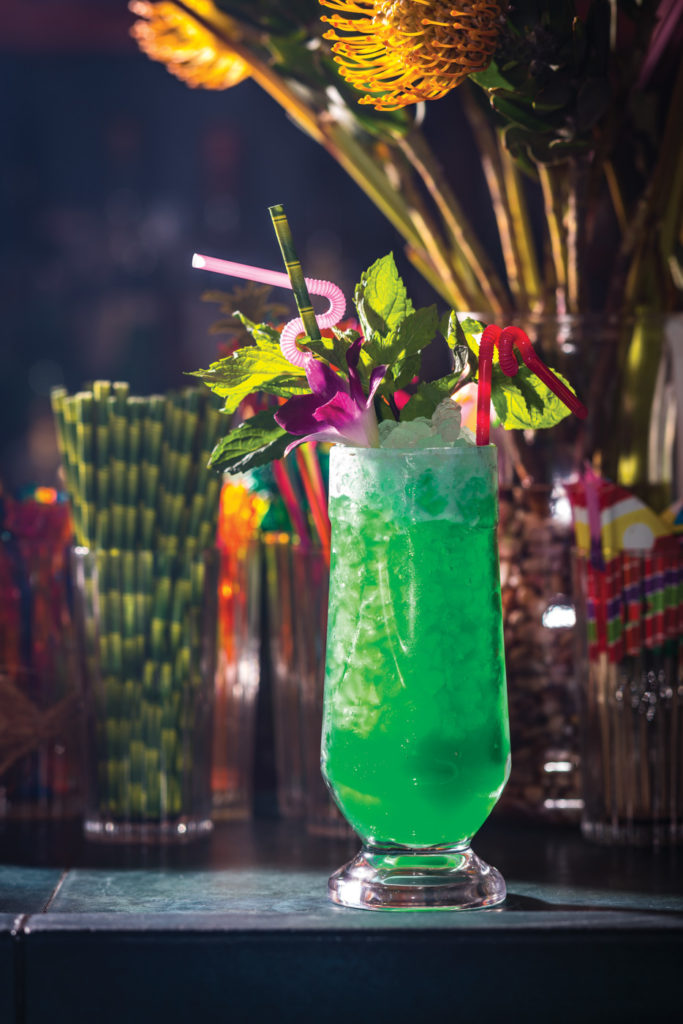
She found herself especially drawn to beverage, and true to form, Mustipher made full immersion and excellence her goal. “Once I figured out that I wanted to work behind the bar, for me the way to go about it was just to aim high right out of the gate,” she says. She set her sights on a position as a beverage director. When we speak, she laughs, remembering the thought process of her younger self: “I didn’t come here to be mediocre. I came here to kill it!”
In 2014, Mustipher took a position at the then New American concept Glady’s in Brooklyn, and it was there that a new path toward that pinnacle revealed itself. She took the initiative to begin offering ideas for nightly specials and was eventually approached by ownership, who in turn proposed the idea of pivoting into a rum bar.
“I had never worked with rum before,” Mustipher says. “This was six years ago. The only rums you’d find in a cocktail bar, if on a menu at all, was Smith & Cross. There just wasn’t a lot on the market.”
But she didn’t shy from the challenge. Mustipher was given a month to create the program, and rather than dip a toe into the waters of rum, she went all in, sampling hundreds of brands and varieties. “I was at the restaurant every day for a month. I tasted through one hundred fifty to two hundred rums to come up with a back bar of fifty,” she tells me. Her approach was methodical and exhaustive—and exhausting.
What kept Mustipher engaged in the rigorous research was her natural inclination to uncover the narrative, which in this case, laid bare a vast set of the spirit’s complexity. “Rum is the most diverse spirit category in the world,” she says. “It’s global. You can make it in over ninety countries.” Mustipher is happy to give a rundown of why she finds rum compelling. “Sugar cane is straddling the line of a fruit from a horticultural standpoint. It is a grass, and depending on how you treat it in fermentation and distillation, it can retain a lot of its inherent qualities. You see in fresh cane spirits like agricole,” she explains. “Coming from a wine background, I really enjoy spirits with a natural substance exerting a huge influence, as opposed to the barrel in the case of whiskey or botanical infusions in the case of gin.”
That complexity promised Mustipher what she had come to seek throughout her career to that point—a deep well of information and history to plumb. She tells me of rum, “It’s a lot like wine in that opportunity to explore a category that has so much to offer and so much range and ongoing learning.”
In rum, Mustipher embraced not only the task at hand for Glady’s, but an opportunity as a narrator to break a new story. “[There] are a lot of things people don’t know about rum or don’t appreciate, and that was part of the passion—being able to tell that story as an educator,” she says. And she developed a reputation for rum expertise, later being tapped to work with producers like Denizen Rum, and to support brands as a consultant.
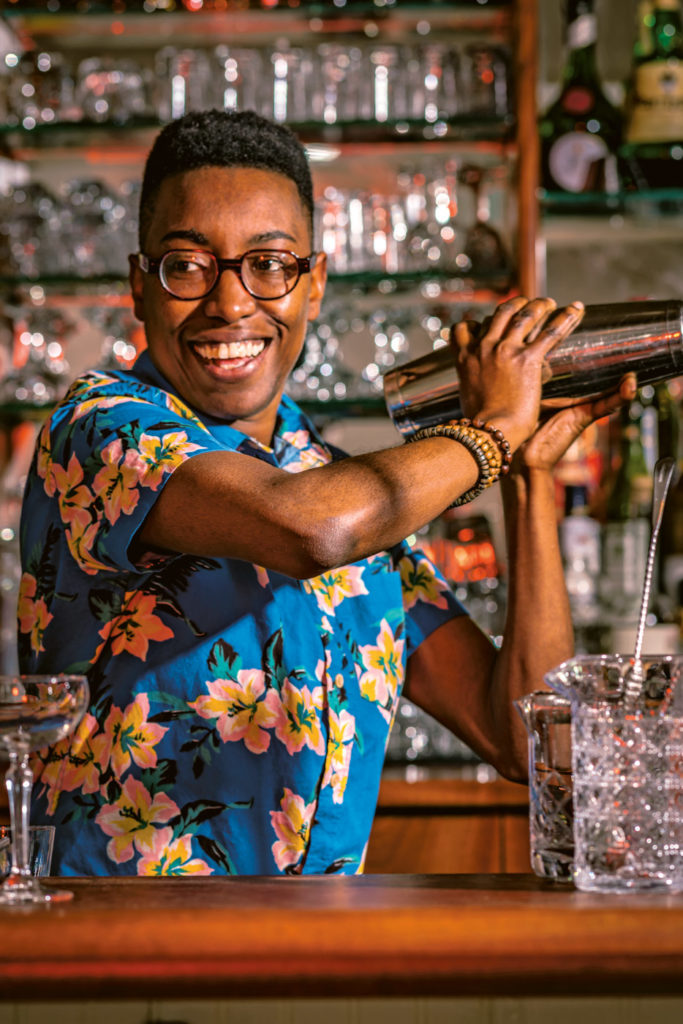
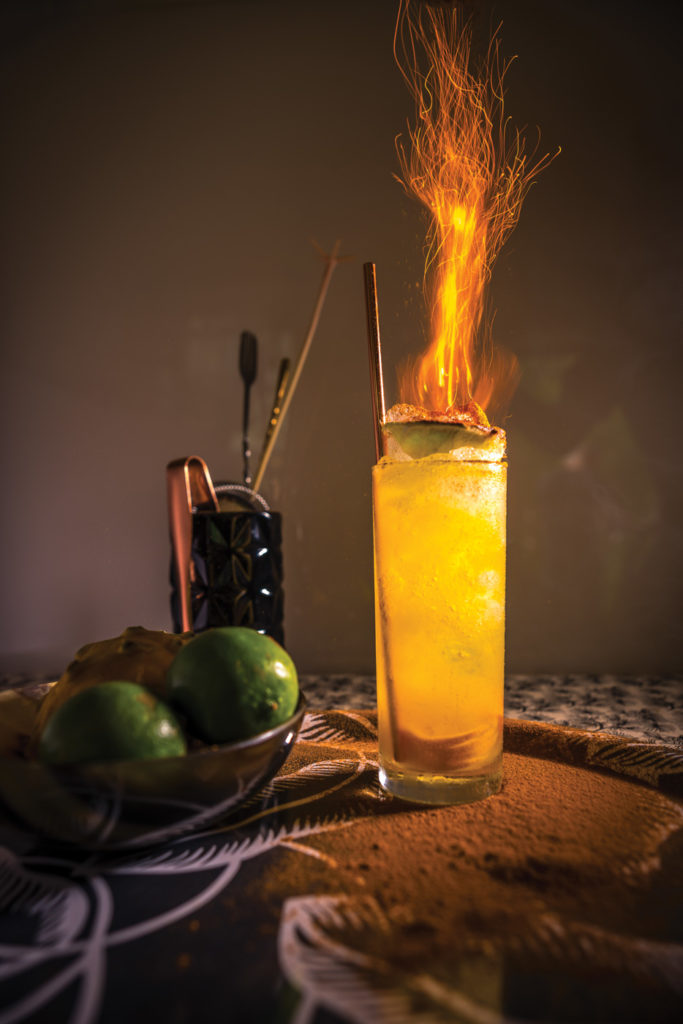
Mustipher considered how to carry the information into staff training as well. She wanted to make sure she was able to equip bartenders with specifics, but to paint a full picture meant examining the spirit’s problematic past. “One of the things I came to realize when I was putting the bar together at Glady’s is that rum is an industry founded on the exploitation of people of color. It’s tied to the slave trade—financed the slave trade—and basically financed the foundation of the modern economy as we know it,” Mustipher explains. The quality of rum she sought for those slots on her shelves was not just about flavor. “For me to carry a low-cost rum and benefit from that would make me complicit in that larger story,” she says.
Part of what makes Mustipher an effective educator is her ability to meet the listener in the world in which they live. “[Rum] was the first boom product,” she tells me. “It set the precedent for the commodification of gold and later oil, and the amount of revenue that was generated by it—no one had ever seen anything produce that amount of revenue,” she says. “Think Silicon Valley or Jeff Bezos—there were some people who were involved in the sugar and rum trade who were wealthy beyond what anyone could imagine apart from maybe being royalty or part of the Catholic church. That’s how major it was.”
Mustipher made sure she wasn’t the only one understanding the historical context and implications. “As I came to appreciate the human cost that came along with that, I would make a point to talk with my staff about it, and to talk about the rums that we carry—not just about what it tastes like, but also to have respect and reverence for what comes along with it,” she says. “And I would not shy away from sharing that with guests.”
Mustipher continued her education, traveling to rum-producing regions like Haiti for her professional development, and reaching into the modern rum industry. She puts into perspective the labor associated with making rum, particularly in historical practices of harvesting by hand. “It’s the most back-breaking labor out there apart from working in a quarry or a mine,” she explains. “The average life expectancy of a slave on a sugar plantation was three to five years, once you started working.”
She explains that hand-harvesting is rare in modern days. “Most producers rely on machine harvesting,” Mustipher says. “Right now, there are only a few rum producers that also operate as sugar operations. The bulk of producers source their sugar from Brazil. It’s a large-scale industrial enterprise, all machine-run, so the labor issues compared to the early days of production are vastly reduced.”
Mustipher wanted to share her reverence for rum, and it was in searching for a showcase that Mustipher arrived in another storied cocktail segment: tiki culture. “I wasn’t trying to do tiki on the menu at Glady’s,” she says. Mustipher was searching for a way to overcome a common perception of rum in order to communicate what she believed was a much more nuanced story. “I knew a lot of people thought rum was sweet and tacky,” she says. “I didn’t know a lot about tiki at the time, and didn’t know if those drinks work or if they might reinforce that idea.” She researched and created a mai tai interpretation “using two types of rum to recreate the flavor profile of a rum that after the seventies was no longer available.” The drink allowed her to experiment with rum blends, adapting and evolving over the years for new products and producers, and was such a success that she kept it on the menu for five years.
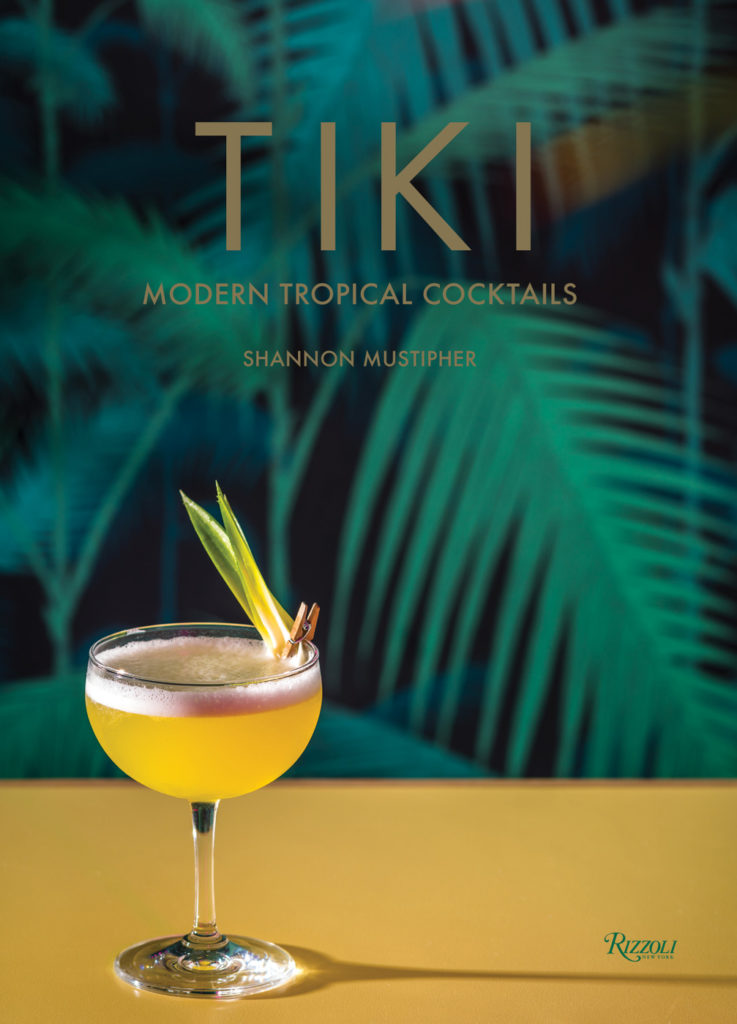
Although that particular drink was a mainstay for Mustipher, she didn’t necessarily feel tiki was her particular story to tell in a Caribbean restaurant. “It wasn’t a tiki bar because I felt like that would have been slapping something disingenuous on top of what it was meant to be as a Caribbean experience,” she says. “I did run tiki nights because I loved those cocktails and I felt they did a lot to show the full potential of rum.”
Mustipher, always in tune as she is to the narratives of the products and styles in which she takes part, has considered the instance and frequency of appropriation within the tiki world with respect to Asian cultures. “I look at tiki as a historical cultural moment,” she explains. “That was a mid-century American style that was everywhere. It was in the fashion, it was in the architecture, it was in the music.”
Today, she says, modern tiki culture is in the hands of progressive cocktail professionals who are keen to adapt. “There are a lot of people talking about different ways to imagine tiki in our current cultural landscape. Some people call it ‘proto-tiki,’ and in that case you’re not doing mugs, because if you really want to just make it about flavors and ingredients, you don’t need mugs” Mustipher says. “There are all kinds of glassware; there are mugs that have no Polynesian references.”
Instead, Mustipher focuses on ingredients, flavor, and a story that encapsulates the moment. When she subsequently released her book, the modern take was emphasized and underscored by the title’s subhead: Modern Tropical Cocktails. “Up until very recently, if you went into a tiki bar, I’d say ninety percent of the cocktails on the menu were classics,” she says. “The development of tiki kind of stopped in the late sixties.”
Given that a major draw of tiki has been nostalgia, the genre became frozen in amber. “There wasn’t a huge desire to evolve it because the whole point of it was the nostalgia.” She says in her book she aimed to reference tradition, but also move forward and “show what was going on in the bar world today, and what I was doing in my bar, which is incorporating ingredients that were not available back then.” Specifically, she refers to Southeast Asian, Caribbean and South American ingredients: “Anything from the equator all over the world.”
Most of all, what Mustipher found in tiki was an opportunity to gather. “Tiki is a community-centric thing,” she says, an aspect that appealed to her as a hospitality professional. “Why do most of us lifers in the hospitality industry become lifers? Because it is a community or a second family; or for some people, it is a family.” To that end, she founded the organization Women Who Tiki (with a tagline of “Girls Just Want to Have Rum”), which, according to the group’s website, is to “bring women bartenders together to share their passion for tiki, elevate their skills behind the bar, and work together to create unforgettable, one-night-only experiences.”
But like so much in the hospitality field, it feels as if Mustipher’s story has reached a turning point. She says the Covid crisis in the hospitality world has induced a realization, “that the way I work with brands and bars is going to shift,” she tells me. “So education and advocacy around the history of spirits is really important, because if that’s the primary ingredient that bartenders are utilizing, the more they understand about it from a technical—as well as a cultural and historical standpoint—the better equipped they are to make the most of that, and to create things that really resonate with things that are important to them and allow them to connect with guests on a deeper level.”
Mustipher is also looking to connect behind the bar and improve the industry for those in it. “I’m working on actively creating an online industry focused journal,” she says. With this new project, she hopes to ask questions about going forward for an industry that not only understands the past, but can lean on one another for the future. Mustipher asks, “How do we empower you as an industry to be more informed not only on how to do things better behind the bar, but also how do you make good business decisions, how do you think about long-term funding for your business, how do you think about retirement, how do you become more discerning and informed about sustainability practices for the products that you’re using?”
That exploration has her questioning what should be restored versus what should be reformed. “We’re questioning, how do we get it back, but maybe we don’t need to get it back,” she says. “I’m working on reopening a restaurant, but is it a bad thing if it doesn’t look the way it did in the past?”
Mustipher’s voice is now one of the most influential in the industry, and she’s received major recognition over the years, featured in Imbibe Magazine’s 75 to Watch in 2019, and her book is on its way to becoming canon (thanks in part to a 2020 nomination for the Tales of the Cocktail Best New Cocktail or Bartending Book). And while she’s sketching the blueprint in many ways for those to come, her path has been an organic one, following not a map per se, but rather opportunities that presented themselves along her path, guided by a desire to achieve, educate and provide.
Mustipher has tackled challenges as they’ve emerged, evolved and adapted to meet new conversations. What Mustipher does next is yet to be determined, but her flexibility in getting her to this point will no doubt have prepared her for what comes next. Mustipher’s mission has always been less about a singular objective, than being someone who could reliably address whatever the world needed at the moment. And in an environment as rapidly changing as the one in which we currently live, that’s an invaluable quality in a leader.






Our comments section is for members only.
Join today to gain exclusive access.